Breast Augmentation in Cambodia
Search and Compare the Best Clinics and Doctors at the Lowest Prices for Breast Augmentation in Cambodia

Find the best clinics for Breast Augmentation in Cambodia
No clinics available
Hungary offers the best prices Worldwide
Price: $ 208

- Home
- Cambodia
Compare Before & After Photos of _procedure_photos.phpBreast Augmentation


Full-side view


Half-side view


Front view


Half-side view


Front view
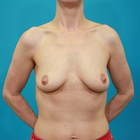

Front view
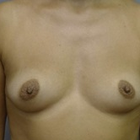

Front view


Front view


Front view
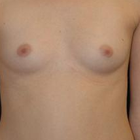
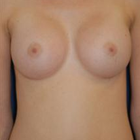
Front view
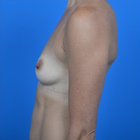

Full-side view
WHY US?
At Medijump, we're making medical easy. You can search, compare, discuss, and book your medical all in one place. We open the door to the best medical providers worldwide, saving you time and energy along the way, and it's all for FREE, no hidden fees, and no price markups guaranteed. So what are you waiting for?

Free

Best Price

Widest Selection

Risk-Free
What you need to know about Breast Augmentation in Cambodia

Breast augmentation, also known as a Boob Job or Breast Enlargement, is a surgical procedure aimed at increasing breast size, enhancing shape, or improving symmetry. In Cambodia, this procedure is carried out by board-certified plastic surgeons in accredited medical facilities, ensuring both safety and quality.
What is the cost of Breast Augmentation in Cambodia?
Prices in Cambodia are competitive, often offering savings without compromising on quality, especially when compared to costs in the US or Europe. However, factors such as surgeon’s fees, facility costs, and the type of implants affect the total cost.
What does a Breast Augmentation Procedure Involve?
The surgery involves placing breast implants under the breast tissue or chest muscles. Choices between saline or silicone implants can be made based on the desired feel and appearance. This is something your surgeon will discuss with you prior to even travelling.
How Long Should I Stay in Cambodia for a Breast Augmentation Procedure?
The length of stay in Cambodia for a Breast Augmentation is subject to various factors, such as your overall health, the specific nature of the procedure, and your individual recovery rate. Generally, Breast Augmentation surgery is an outpatient process, meaning you may be able to return home on the same day. However, a stay of up to two days might be necessary if your procedure is more intricate.
Although the hospital stay is relatively brief, it is advisable to remain in Cambodia for at least one-week post-procedure. This timeframe allows for initial recovery and a follow-up appointment with the surgeon. Moreover, in the event of any complications, prompt medical assistance will be accessible. Thorough knowledge of the recovery process and its duration is crucial for proper preparation and managing stress during treatment.
What's the Recovery Time for Breast Augmentation Procedures in Cambodia?
Post-surgery, a recovery period of one to two weeks is generally required, with follow-up visits to the surgeon. It's crucial to follow all post-op instructions for optimal healing.
Experiencing swelling and discomfort following the operation is normal, both of which should gradually alleviate with time. You will be required to wear a compression garment, take prescribed medications, and maintain a healthy lifestyle for an effective recovery.
What sort of Aftercare is Required for Breast Augmentation Procedures in Cambodia?
Post-operative care is critical for the success of a Breast Augmentation. The initial recovery phase usually includes prescribed medications to alleviate pain and avert infection. Individuals can normally resume everyday activities within a few weeks, depending on their healing pace and bodily responses. However, it is advisable to refrain from vigorous activities for a minimum of six weeks post-procedure.
What's the Success Rate of Breast Augmentation Procedures in Cambodia?
In Cambodia, Breast Augmentation boasts a relatively high success rate, which contributes to its immense popularity among individuals seeking improvements in their physical appearance. Numerous patients have reported satisfaction and enhanced confidence after undergoing the procedure, making it a widely favoured cosmetic surgery.
Are there Alternatives to Breast Augmentation Procedures in Cambodia?
In Cambodia, there are several alternatives to the Breast Augmentation. If you're considering breast augmentation strictly for cosmetic reasons and prefer non-surgical options, various suitable methods are available. Alternatives include fat grafting, hormonal therapy, and natural remedies. Fat grafting, also known as fat transfer, involves removing fat from different body parts and injecting it into your breasts. This approach is regarded as safer because it employs the body's tissue, minimizing complications.
What Should You Expect Before and After the Procedure?
Prior to the procedure, your surgeon will discuss your expectations and the anticipated outcomes of your Breast Augmentation. The preoperative consultation comprises an in-depth conversation about your medical history, a physical examination, and an outline of the procedure and postoperative care. Open and candid communication with your healthcare provider is crucial at this stage to ensure the treatment matches your objectives.
Post-procedure, initial swelling and discomfort are normal and can be managed with prescribed medication. It's vital to adhere to your surgeon's post-operative guidelines, which include caring for surgical incisions, taking prescribed medications, and attending follow-up appointments. As swelling subsides and incision lines fade gradually, your enhanced breast profile will become apparent.
Keep in mind that the decision to pursue a Breast Augmentation is deeply personal and should not be made hastily. Allocate time to consider the advantages and drawbacks, and ensure you are well-informed.
What are the Risks and Complications of Breast Augmentation Procedures in Cambodia?
As is the case with any surgical intervention, Breast Augmentation comes with its own set of risks and potential complications that need to be considered. These may include infections, bleeding, alterations in nipple or breast sensations, implant leakage or rupture, development of scar tissue, and unsatisfactory outcomes that could necessitate further surgeries.
Some individuals may also encounter complications tied to anesthesia, such as respiratory problems and reactions to medication. The psychological ramifications should not be overlooked, considering surgical procedures can impact mental well-being. An extensive conversation with your healthcare provider about these potential risks remains a key component in making an informed choice.
How to Prepare for Breast Augmentation in Cambodia?
Thorough preparation plays a significant role in the success of your Breast Augmentation. Before the surgery, you must have detailed conversations with your surgeon about your medical background, allergies, current medications, and lifestyle habits such as smoking or alcohol consumption. You may need to cease certain medications and habits, including smoking, weeks before the procedure, as they can influence the healing process.
Practical preparations like organizing for someone to be with you on the day of the surgery, scheduling sufficient time off work for recovery, and establishing a comfortable space at home for recuperation can contribute to a smoother post-operative phase. Your surgeon's team will also advise you on pre-operative fasting and hygiene guidelines.
What are some Common Misconceptions about Breast Augmentation?
Despite its widespread popularity, numerous misconceptions surround the Breast Augmentation. One such misconception asserts that breast implants are permanent. In actuality, breast implants may require replacement after 10-15 years, with the specific timeframe depending on individual health and lifestyle factors. Another false assumption is that breast augmentation solely serves vanity purposes. In reality, many patients undergo this procedure following mastectomy or as part of gender-affirming surgery.
A further common myth suggests that breast augmentation hinders breastfeeding. While a few instances might affect breastfeeding, the majority of individuals with breast implants can successfully breastfeed.
Whilst the information presented here has been accurately sourced and verified by a medical professional for its accuracy, it is still advised to consult with your doctor before pursuing a medical treatment at one of the listed medical providers
No Time?
Tell us what you're looking for and we'll reachout to the top clinics all at once
Enquire Now

Popular Procedures in Cambodia
Prices Start From $834

Prices Start From $500

Prices Start From $93

Prices Start From $85

Prices Start From $477

Prices Start From $931

Recommended Medical Centers in Cambodia for procedures similar to Breast Augmentation

- Interpreter services
- Translation service
- Religious facilities
- Medical records transfer
- Medical travel insurance
- Health insurance coordination
- TV in the room
- Safe in the room
- Phone in the room
- Private rooms for patients available

- Interpreter services
- Translation service
- Religious facilities
- Medical records transfer
- Medical travel insurance
- Health insurance coordination
- TV in the room
- Safe in the room
- Phone in the room
- Private rooms for patients available

- Interpreter services
- Translation service
- Religious facilities
- Medical records transfer
- Medical travel insurance
- Health insurance coordination
- TV in the room
- Safe in the room
- Phone in the room
- Private rooms for patients available

- Interpreter services
- Translation service
- Religious facilities
- Medical records transfer
- Medical travel insurance
- Health insurance coordination
- TV in the room
- Safe in the room
- Phone in the room
- Private rooms for patients available

- Interpreter services
- Translation service
- Religious facilities
- Medical records transfer
- Medical travel insurance
- Health insurance coordination
- TV in the room
- Safe in the room
- Phone in the room
- Private rooms for patients available

- Interpreter services
- Translation service
- Religious facilities
- Medical records transfer
- Medical travel insurance
- Health insurance coordination
- TV in the room
- Safe in the room
- Phone in the room
- Private rooms for patients available

- Interpreter services
- Translation service
- Religious facilities
- Medical records transfer
- Medical travel insurance
- Health insurance coordination
- TV in the room
- Safe in the room
- Phone in the room
- Private rooms for patients available

- Interpreter services
- Translation service
- Religious facilities
- Medical records transfer
- Medical travel insurance
- Health insurance coordination
- TV in the room
- Safe in the room
- Phone in the room
- Private rooms for patients available
Breast Augmentation in and around Cambodia
Introduction
Perched in the heart of Southeast Asia, nestled between Thailand and Vietnam, lies Cambodia — a dynamic blend of ancient and contemporary worlds that makes for an intriguing adventure. Dominating its list of attractions is the globally-renowned Angkor Wat, embroidered by lush jungles.
It is the soul of Cambodia — its vibrant culture, warm inhabitants, profound historical heritage, stunning coastlines, delightful cuisine, and spirited nightlife — that gives this nation its unique charm. Each element, individually fascinating and collectively harmonious, weaves a magical tapestry that is Cambodia.
Over recent years, Cambodia has strategically bolstered its healthcare infrastructure, aiming to appeal to a global patient community. In this endeavor, the country has witnessed several of its hospitals forging partnerships with institutions from close-by countries, with Thailand being a significant partner.
These strategic alliances have been key in establishing state-of-the-art healthcare facilities across Cambodia. These healthcare establishments strive to cater to a diverse array of medical needs, ensuring the delivery of world-class, professional care that meets, if not surpasses, internationally accepted standards.
Cambodia is relentlessly driving efforts to enhance its healthcare sector, with one main goal - to give patients access to top-notch medical care at costs significantly lower than those in other Southeast Asian nations, Singapore being a prime example.
This strategic approach is geared towards attracting patients from regions like Laos, Taiwan, and China. The essence of this approach is to establish Cambodia as a major healthcare destination that offers high-quality medical services, all within a budget-friendly framework that doesn’t strain patients' finances.
Popular Cities and Regions in Cambodia
Phnom Penh is the capital of Cambodia, as well as the main medical tourism destination in the country. Once the ‘Pearl of Asia,’ this bustling city is now filled with bustling bars, historical architecture, vibrant café culture, a world-class food scene, and a glimmering Royal Palace.
Tourists venturing into Cambodia are invited to traverse the myriad attractions this enchanting nation has to offer. A must-visit is the National Museum of Cambodia which houses the country's extensive cultural history and art. For those who seek a deeper insight into Cambodia's past, the Tuol Sleng Genocide Museum provides a poignant yet important glimpse into the darker chapters of its history. In addition, the Royal Palace stands as a testament to Cambodia's architectural grandeur, drawing admiration from visitors across the globe. Another gem to explore in Phnom Penh is the Silver Pagoda, a unique blend of tranquility and exquisite craftsmanship, making for an unforgettable experience.
Moving beyond the capital city of Phnom Penh, Siem Reap emerges as another popular destination in the Cambodian travel circuit. This city, bustling with energy and soaked in history, captures the diverse ethos of Cambodia in its vibrant art, architecture, and local life. Inclusion of Siem Reap in any Cambodian itinerary lends an additional layer of cultural depth, making the exploration of this intriguing nation an even more enticing proposition. As such, whether it's diving into the past or experiencing the dynamic present, Cambodia offers a varied palette of experiences to delve into.
It’s where the fascinating, UNESCO-listed Angkor Wat is located. Aside from Angkor Wat, Siem Reap also offers other attractions, such as the Angkor Silk Farm, Wat Bo, War Museum, and Senteurs d’Angkor Botanic Garden. Those who want to relax on a beach should visit Sihanoukville. It was once a quiet beach town, but now it has become a modern up-and-coming holiday destination.
Transport in Cambodia
Phnom Penh International Airport stands as the largest and most bustling airport in Cambodia. Acting as a critical transportation nexus, it facilitates both domestic and international air travel. The airport offers numerous flight connections to various cities across Asia, making it a convenient choice for international tourists. Besides being a gateway into Cambodia, it also serves as a starting point for internal travel.
For tourists looking to cover various parts within the country swiftly, opting for domestic flights is a time-efficient choice. These flights are well-linked, providing easy access to different parts of this captivating country. Despite being the fastest mode of travel, they maintain reasonable fares, ensuring that the journey is equally enjoyable as the destination.
As one navigates within the cities, there is a disparity between the modes of transportation used for intra-city and inter-city travel. While trains and buses are the preferred options for traveling between different cities due to their affordability, city-based transportation adopts a different palette altogether. For daily city commutes and quick visits to local sights, taxis, tuk-tuks, and motorbikes are the most viable options. They're not only readily available but also allow for an intimate view of Cambodian city life. This dynamic and efficient transportation network significantly enhances the convenience of exploring Cambodia's stunning expanse.
Visas in Cambodia
- Citizens of 9 countries, including Laos and Singapore, can visit and stay in Cambodia for up to 30 days without a visa.
- Citizens of most other countries can apply for a visa on arrival or eVisa.
- All visitors must have a passport valid for at least six months beyond their intended date of departure from Cambodia.
Visa on arrival
- A visa on arrival can be obtained at any of the following Cambodian airports: Phnom Penh International Airport (PNH), Siem Reap International Airport (REP), and Sihanoukville International Airport (KOS).
- The visa on arrival fee is USD 30.
- Visitors who obtain a visa on arrival must have a valid passport and two passport-size photos.
eVisa
- An eVisa can be obtained online at the website of the Cambodian government.
- The eVisa fee is USD 35.
- Visitors who obtain an eVisa must have a valid passport and a digital photo.
Weather in Cambodia
Cambodia is blessed with a warm climate throughout the year, making it a destination for all seasons with temperatures seldom falling below 20°C. Cambodian weather is generally categorized into two primary seasons: wet and dry. The wet season, spanning from May to October, is marked by episodic showers during daytime hours, adding to the country's tropical charm.
The dry season, commencing from November and extending up to April, is typified by agreeable and sunny weather conditions, making it an ideal time for travel and exploration. However, it is worth noting that during the peak of the dry season, specifically in March, temperatures can climb up to a sweltering 35°C. Despite the somewhat extreme conditions, the resplendent beauty of the country remains undeterred, with Cambodia promising a riveting experience regardless of the season.
Additional Info
- Local Currency: Cambodian riel (KHR) is the official currency and 1 USD converts to approx. 4,161.63 KHR. However, USD is widely accepted.
- Money & Payments: ATMs are widely available and sometimes dispense US dollars. Credit cards are accepted in major cities. Tipping is expected and appreciated.
- Local Language: The official and mainly spoken language is Khmer. Some people also speak Vietnamese and Chinese. English is mostly used in tourist areas and major cities.
- Local Culture and Religion: About 97% of the population follows Theravada Buddhism. Islam, Christianity, and tribal animism make up the remaining 3%.
- Public Holidays: Victory over Genocide Day, Khmer New Year, King’s Birthday, Day of Remembrance, and Independence Day are some of the public holidays celebrated in Cambodia.
Popular Searches
- Plastic Surgery in Thailand
- Dental Implants in Thailand
- Hair Transplant in Thailand
- Breast Augmentation Thailand
- Gastric Sleeve in Thailand
- Gender Reassignment Surgery in Thailand
- Laser Hair Removal in Bangkok
- Botox in Bangkok
- Dermatology in Bangkok
- Breast Augmentation in Bangkok
- Coolsculpting in Bangkok
- Veneers in Turkey
- Hair Transplant in Turkey
- Rhinoplasty in Turkey
- Stem Cell Therapy in Mexico
- Rhinoplasty in Mexico
- Liposuction in Mexico
- Coolsculpting in Tijuana
- Rhinoplasty in Korea
- Scar Removal in Korea
- Gastric Sleeve in Turkey
- Bone Marrow Transplant in India
- Invisalign in Malaysia
- Plastic Surgery in the Dominican Republic
- Tummy Tuck in the Dominican Republic
- Plastic and Cosmetic Surgery in Poland
- Rhinoplasty in Poland
- Hair Implant in Poland
- Dental Implants in Poland
- IVF in Turkey